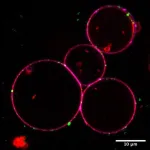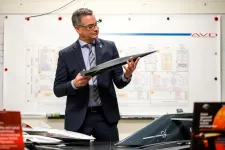(Press-News.org) The epidemic of firearm injury and death in the USA is preventable, and the field of public health can offer practical solutions, argue Dr. Megan L. Ranney and colleagues in an opinion article in PLOS Global Public Health. Through harm reduction and community engagement programs, public health professionals, healthcare providers and community members can reduce the impact on individuals, families and communities.
Despite the attention school and public mass shootings in the US gain, they make up a minority of US firearm injuries and deaths. Most firearm deaths are from homicide and suicide: in 2021 four in every five US homicide deaths were caused by firearms.
There is evidence from systematic reviews that some legislative policies, such as particularly safe storage laws, correlate with reduced injury and death. Yet legislation alone rarely solves a public health problem. Additional public health strategies offer some hope.
Harm reduction involves engaging people at risk and offering interventions without barriers. Safer storage of firearms, for example, has the potential to decrease firearm deaths from suicide or unintentional injury. This practice can be encouraged in a variety of ways, including individual-level counselling from healthcare providers - in the same way they would talk about bicycle helmets or access to medicines.
Collective, community-driven prevention efforts are also needed, particularly among at-risk populations. Firearm homicide is the leading cause of death for Black males aged 15-34, and Black men are 10-20 times more likely to be killed by a gun than their White counterparts. A community-based public safety collective is building capacity for research and advocacy to address community violence in Black and Brown communities.
These and similar efforts could disrupt the US crisis of firearm injury and death, but there must be substantial investment in research, people, programming, personnel, policies and infrastructure in order to shift culture away from this health threat of epidemic proportion.
Dr. Ranney adds: “Firearm injury is a public health epidemic with ramifications that impact all of us, as well as solutions that include, but are not limited to, policy changes. In order to end this uniquely American epidemic, we must apply a community-rooted, harm-reduction approach. This paper outlines solutions that are likely to be successful at reducing the alarming number of firearm injuries and deaths in the United States.”
#####
Author Interview:
PLOS: What first drew you to frame the US gun violence problem as a public health issue?
Megan L. Ranney, MD, MPH: As a physician, I saw the clear health effects of a gunshot wound. As a public health professional, I had seen the success of the public health approach in decreasing deaths from problems as varied as car crashes and HIV - and knew that we could apply it to this problem, too.
Kristen Mueller, MD: As a doctor working clinically in the ER in St. Louis, firearm-injured patients are so common at my adult and pediatric level I trauma hospitals that they are now part of my regular clinical practice. In an effort to slow rates of these preventable, treatable injuries, I helped develop and implement the St. Louis region-wide hospital-based violence intervention program, Life Outside Violence. Through this work, I have developed a great appreciation of the impact of structural racism and social determinants of health on firearm injury prevalence, and the ways this impacts my patients’ experiences surviving and healing after surviving a firearm injury. Public health methods are well-positioned to mitigate the burden of this epidemic moving forward.
Nakita Lovelady, PhD, MPH: As a trained public health scientist, I have always viewed gun violence as a public health issue, despite it not being thought of or treated as such. As more people are impacted by gun violence, there has been an increased awareness of this being a larger societal public health concern. I’m happy that many are beginning to understand that gun violence is a complex issue with several structural level factors of influence. It has to be treated like any other public health crisis, requiring multiple levels of intervention that go beyond the individual level. I’m fortunate to operationalize this public health frame to address gun violence within southern rural states that often are faced with disproportionate rates, unique context, and limited development and support for community violence intervention.
PLOS: Can you tell us more about the principle of harm reduction as it relates to solutions or mitigation for gun violence in the US?
Megan L. Ranney, MD, MPH: “Harm reduction” is a concept that allows us to move beyond an all-or-nothing approach. Using the harm reduction concept, we can instead create solutions that decrease the risk of an injury. We don’t have to talk about banning guns or arming everyone; we can talk about how to reduce the chance of someone who’s high risk, having access to a gun.
Kristen Mueller, MD: I completely agree with Dr. Ranney. Harm reduction is one technique under the public health umbrella that helps us address the firearm injury epidemic in real-world conditions–where our patients live, how they live–across all levels of the social-ecologic model of violence prevention.
Nakita Lovelady, PhD, MPH: Agreed and well said. I think this is very similar to what we have done for decades with health disparities research in general. We have gone back and forth with the goal of eliminating vs. reducing health disparities, because yes – while we would like to eliminate all disparities, it may not be a practical goal. So yes, we would like to eliminate all firearm injuries, but given the context and complexity of the issue, it’s not practical to employ all or nothing solutions. However, to get us closer to our goals of saving lives, we must employ feasible harm reduction strategies that begin to mitigate gun violence and its social determinants.
PLOS: In your final paragraph, you outline the need for "intentional investment in research, programming, personnel, policies, and community infrastructure" – Could you briefly outline or describe possible future investments that you'd deem most urgent or pressing for our communities and leaders to make?
Megan L. Ranney, MD, MPH: After 24 years of almost zero federal investment in this issue, we need to do so much! Research matters, so that we’re delivering the best possible solutions. Community engagement matters. Addressing structural drivers of firearm injury matters. Improved funding for community and hospital violence intervention programs, mental health professionals for people with suicidal thoughts, and collaboration with gun shop owners, police, and military all can make a difference.
Kristen Mueller, MD: Agree! In addition to improved federal and community funding, I would love to see universities make strategic investments to prevent firearm violence and injuries at the local level. For example, many universities are well-positioned to be a funding, coordinating, and evaluation hub for community-hospital-university partnerships to increase the reach, efficacy, and sustainability of multi-disciplinary firearm injury prevention programs.
Nakita Lovelady, PhD, MPH: I echo you both. I will add that intentional investment also means investment in equity-focused approaches and strategies to gun violence prevention. That means allocating funds specifically to address the undue burden in communities of color that have been disproportionately impacted for decades. That means supporting and growing Black and Brown researchers, practitioners, and other stakeholders involved in gun violence prevention work. That means being intentional and not afraid to challenge traditional “gold standard” research designs and requiring mixed-method approaches that include rigorous qualitative methodology, because like many colleagues have stated before, there is no solving this issue and achieving health equity without qualitative context. That also means being intentional about bringing diverse perspectives to the table to solve this issue. In the words of my mentor, Dr. Joseph B. Richardson Jr., a multidisciplinary approach is necessary. And yes, that also means being intentional about ensuring vulnerable voices are a driving force at the table, which will further ensure meaningful impact and sustainability of our work.
PLOS: What do you hope your Opinion piece might lead to, and what are the next steps for your work?
Megan L. Ranney, MD, MPH: We hope that the opinion piece will widen people’s frame of possible solutions to our uniquely American firearm injury epidemic. We are each, individually, continuing both research and community advocacy to decrease both the burden of injury and its long-term ripple effect.
Kristen Mueller, MD: The scope of firearm injuries in the U.S. can be daunting. I hope that this Opinion piece will help more people realize that while firearm injuries are a big issue, they are also an entirely solvable problem. Just like with COVID, the flu, strokes, and heart attacks, firearm injuries are a disease that can be tracked, treated, and ultimately prevented, just like any other disease. With strategic investment, coordination, and public health guidance, this paradigm is ready to be shifted.
Nakita Lovelady, PhD, MPH: Agreed. I hope this piece increases understanding of the magnitude and complexity of gun violence in America and the opportunity we have as a nation to tackle this issue with key public health perspectives and solutions. I hope it helps shift the narrative on how we as a society think about gun violence and sparks creativity and action for resolution that reaches all communities, especially those perpetually devastated by gun violence every day, every hour, and every few minutes.
#####
In your coverage please use this URL to provide access to the freely available article in PLOS Climate: https://journals.plos.org/climate/article?id=10.1371/journal.pgph.0001913
Citation: Mueller KL, Lovelady NN, Ranney ML (2023) Firearm injuries and death: A United States epidemic with public health solutions. PLOS Glob Public Health 3(5): e0001913. https://doi.org/10.1371/journal.pgph.0001913
Author Countries: US
Funding: This work was supported by the Centers for Disease Control and Prevention (CE003267 to MLR) and the National Institute of Health (NIGMS P20 GM139664 to MLR, U54 MD002329 to NL, UL1 TR003107 to NL, and UAMS Translational Research Institute KL2 TR003108 to NL). The funders had no role in study design, data collection and analysis, decision to publish, or preparation of the manuscript.
END
Public health solutions to disrupt the US firearm crisis
2023-05-24
ELSE PRESS RELEASES FROM THIS DATE:
Gender trumps politics in determining people’s ability to read others’ minds
2023-05-24
Political parties regularly claim to have their finger on the pulse and be able to read the public mood. Yet a new study challenges the idea that being political makes you good at understanding others: it shows gender, not politics, is a far more important factor in determining people’s social skills.
Analysis of a sample of 4,000 people from across the UK, compiled by a team of psychologists at the University of Bath, highlights that being female and educated are the biggest determinants of whether you can understand or read others’ ...
Georgia Tech researchers develop wireless monitoring patch system to detect sleep apnea at home
2023-05-24
The prevalence of sleep disorders, like sleep apnea, is on the rise in the U.S., but current protocols to conduct clinically accepted assessments are expensive and inconvenient.
Georgia Tech researchers have created a wearable device to accurately measure obstructive sleep apnea — when the body repeatedly stops and restarts breathing for a period — as well as the quality of sleep people get when they are at rest.
Under conventional methods, people who are suspected of having some sleep issue or disorder ...
How tasty is the food?
2023-05-24
To know when it’s time for a meal – and when to stop eating again – is important to survive and to stay healthy, for humans and animals alike. Researchers at the Max Planck Institute for Biological Intelligence investigated how the brain regulates feeding behavior in mice. The team found that the hormone ghrelin activates specialized nerve cells in a brain region known as the amygdala. Here, the interaction between ghrelin and the specialized neurons promotes food consumption and conveys ...
Discovery slows down muscular dystrophy
2023-05-24
A team of researchers at the University of Houston College of Pharmacy is reporting that by manipulating TAK1, a signaling protein that plays an important role in development of the immune system, they can slow down disease progression and improve muscle function in Duchenne muscular dystrophy (DMD).
DMD, caused by mutations in dystrophin gene, is an inheritable neuromuscular disorder that occurs in one out of 3,600 male births. DMD patients undergo severe muscle wasting, inability to walk and eventually death in their early thirties due to respiratory failure. The ...
A novel method to quantify individual limb contributions to standing postural control
2023-05-24
Research question
Can these contributions to standing postural control be quantified from CoP trajectories in neurotypical adults?
Methods
Instantaneous contributions can be negative or larger than one, and integrated contributions sum to equal one. Proof-of-concept demonstrations validated these calculated contributions by restricting CoP motion under one or both feet. We evaluated these contributions in 30 neurotypical young adults who completed two (eyes opened; eyes closed) 30-s trials of bipedal standing. We evaluated the relationships between limb contributions, self-reported limb dominance, and between-limb ...
NASA data could lead to more accurate weather forecasts
2023-05-24
A University of Texas at Arlington civil engineering researcher will use a NASA grant to help forecasters better predict extreme weather events using a variety of existing NASA data sources.
Yu Zhang, associate professor in the Department of Civil Engineering, said the $638,000 grant will use ocean circulation data, atmospheric conditions and current weather information to make longer-range forecasting more reliable. Having a more accurate forecast could help officials make better decisions about the state’s water resources—for example, knowing when to release water from reservoirs.
“Using ...
Digital engineering to reduce risks that lead to brain injuries
2023-05-24
A University of Texas at Arlington engineering researcher who studies traumatic brain injuries has received funding to use computer motion simulation that replicates the movements of a person performing activities that could lead to injury.
The project, funded by a nearly $1 million grant from the Office of Naval Research Defense University Research Instrumentation Program (DURIP), will use real-time data of phantom head and phantom body reactions to ascertain what physical injuries could come from those motions.
Ashfaq Adnan, a UT Arlington professor in the Department of Mechanical and Aerospace Engineering, is leading the project, called “System for Remote ...
A look into the heart of cellular waste disposal
2023-05-24
To prevent our body’s cells from overflowing with garbage and to keep them healthy, the waste inside them is constantly being disposed of. This cleaning process is called autophagy. Scientists have now, for the first time, rebuilt the complex nanomachine in the laboratory that starts this process – and it works quite differently from other cellular machines. The researchers’ new insights could help open up new approaches for the treatment of cancer, immune disorders, and neurodegenerative diseases in ...
Designing a next generation hypersonic demonstrator
2023-05-24
Today, large commercial jets fly around 580 mph. The Lockheed SR-71 Blackbird introduced in 1966 is the fastest supersonic jet vehicle in the world, reaching speeds of more than 2,200 mph, nearly four times faster than a commercial jet.
The fastest rocket-powered hypersonic vehicle developed in the late 1960s carrying a human has been the North American X-15, reaching a top speed of 4,520 mph, twice that of the SR-71.
Recently, the U.S. Air Force has awarded a contract to engineer Project Mayhem with the goal to reach 4,603 mph. Now, imagine a vehicle that could fly much faster, maybe even above 6,905 mph, which is beyond nine times the speed of sound.
The University of Texas at Arlington’s ...
Confusion over VAERS: Why the vaccine safety reporting system should be renamed
2023-05-24
PHILADELPHIA – The federal health system for reporting “adverse events” after vaccination, known as VAERS, is designed to assist in the early detection of complications and responsive action. But when the pandemic and advent of new vaccines for Covid-19 turned a spotlight on this formerly little-known system, the flood of web and social media references to it was accompanied by confusion about what the system is and what the reports in it signify.
A new report from the Annenberg Public Policy Center examines misconceptions about the government’s Vaccine Adverse ...







